Filmmaker 5 with Benjamin Massoubre and Amandine Fredon: Little Nicholas Happy as Can Be

First published in 1959 in the Sud-Quest Dimanche newspaper, the ‘Nicolas’ stories enchanted French audiences of adults and children alike. The collaborative creation of writer René Goscinny and cartoonist Jean-Jacques Sempé, the pair published more than 222 ‘Le Petit Nicolas’ stories, later created into books. ‘Le Petit Nicolas’, or Little Nicholas, became part of French culture, with the stories beloved by generations, selling more than 15 million copies and translated into 40 languages.
Little Nicholas: Happy as Can Be, directed by Benjamin Massoubre and Amandine Fredon, tells the story of René Goscinny and Jean-Jacques Sempé through their interactions with their famous character Little Nicholas. An animated feature capturing the charm and humor of the original series, the film was years in the making, including collaborations with Jean-Jacques Sempé himself and Anne Goscinny, René’s daughter. Tapping into their accounts and the personal correspondence between Little Nicolas’ creators, the film is a touching homage to their talents and their legacy.
The U.S. rights to award-winning animated feature Little Nicholas: Happy as Can Be were acquired by Buffalo 8 with theater showings beginning in December 2022. Our Classic Couple Academy interview with Little Nicholas: Happy as Can Be co-directors Benjamin Massoubre and Amandine Fredon follows.
Filmmaker 5.1: You tell the story of the collaboration of Jean-Jacques Sempé and René Goscinny through their interactions with their iconic character, Little Nicholas. Why was it important to tell this story partially from a child’s perspective? And to include Little Nicholas in it as a character?

Benjamin: From the beginning our film, like most of Sempé’s and Goscinny’s work, was designed for all audiences. We wanted to make a movie that could work for kids and adults alike. Pretty quick we thought that installing a dialog between Nicolas, a kid, and his creators, adults, would be a great way to achieve that. We talk about difficult parts of Goscinny’s and Sempé’s life during the course of our story but as they tell their story to Nicholas, at a kid’s level, it makes it easier for the young audiences to understand as the memories are seen through the eyes of a child. It allowed us not to be too grim and still stay true to René’s and Jean Jacques’s story. That really helped us to talk to children about really hard subjects like the Holocaust or Jean Jacques’s abusive step father.
Amandine: Initially, the idea was to make a documentary that would combine archival footage of Jean-Jacques Sempé and René Goscinny with animated Little Nicholas stories. In the end, the project evolved, and eventually it became clear that we wanted to do the whole film in animation from the point of view of a child. This allowed us to have an active little Nicolas, who asks questions, challenges the spectators, discusses with these creators. Children can easily identify with him.

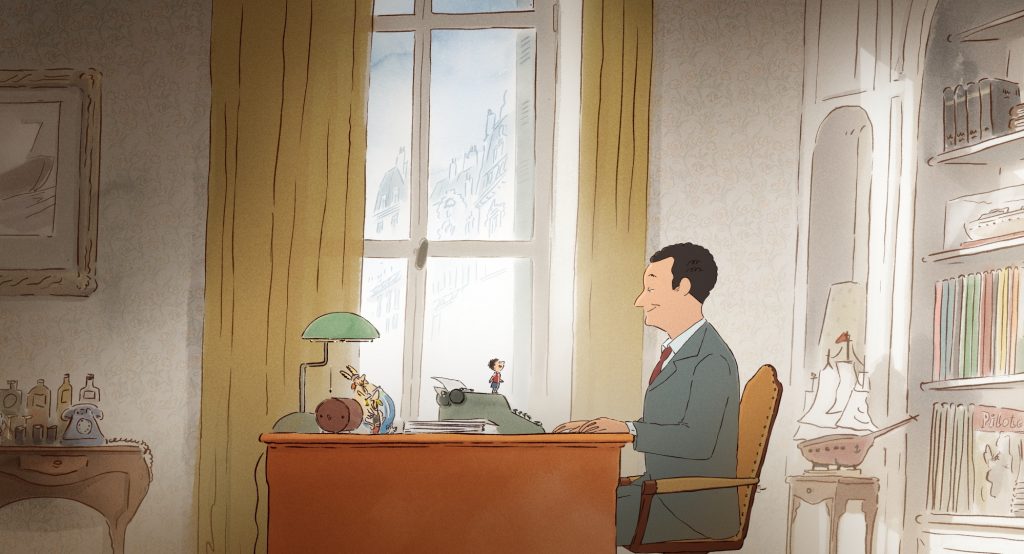
Filmmaker 5.2: Much like Sempé and Goscinny, you two brought unique backgrounds and perspectives to the collaboration. How did your roles on this project reveal themselves and what was the biggest discovery you made while working together on the film?
Benjamin: It’s actually really funny, Amandine comes from an art school and I come from an editing and screenwriting background so you can say that she was my Sempé and I was her Goscinny. We were very complementary from the beginning, and as the movie evolved our everyday interactions and the way we worked together really infused into the story. It was curious at first but we ended up putting a lot of ourselves and our relationship into the characters and in a bizarre way they started mimicking us and we started mimicking them. Was it life imitating art or art imitating life? We got confused at some point.
Amandine: The most important thing is to have the same point of view of the film, the same direction. Benjamin is very good at building the narrative through editing, and for my part, I did a lot of artistic tests with the teams. The project was difficult, both to have a fluid narration between the two worlds, and at the same time to adapt Sempé’s drawing style. So we had to work together; it was very motivating and exciting.
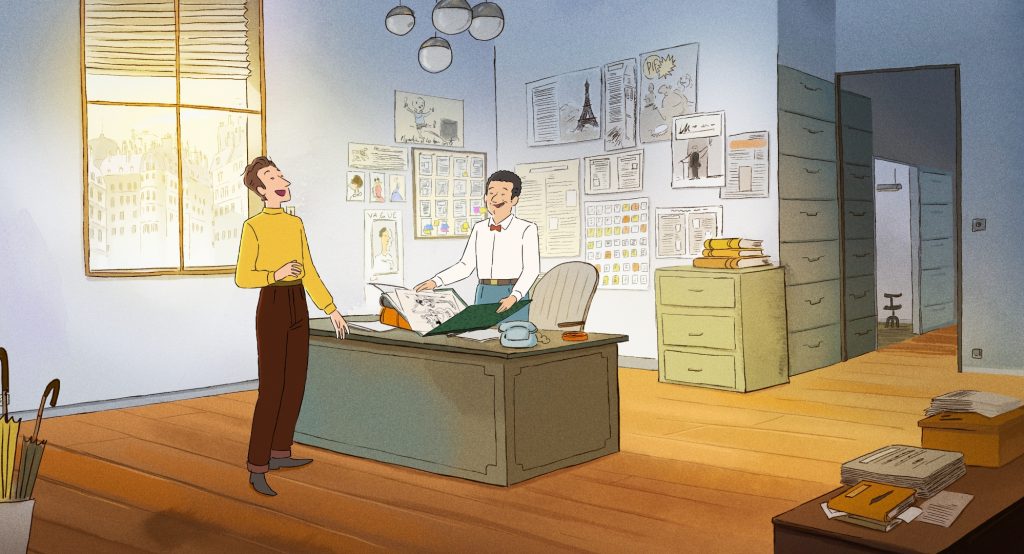
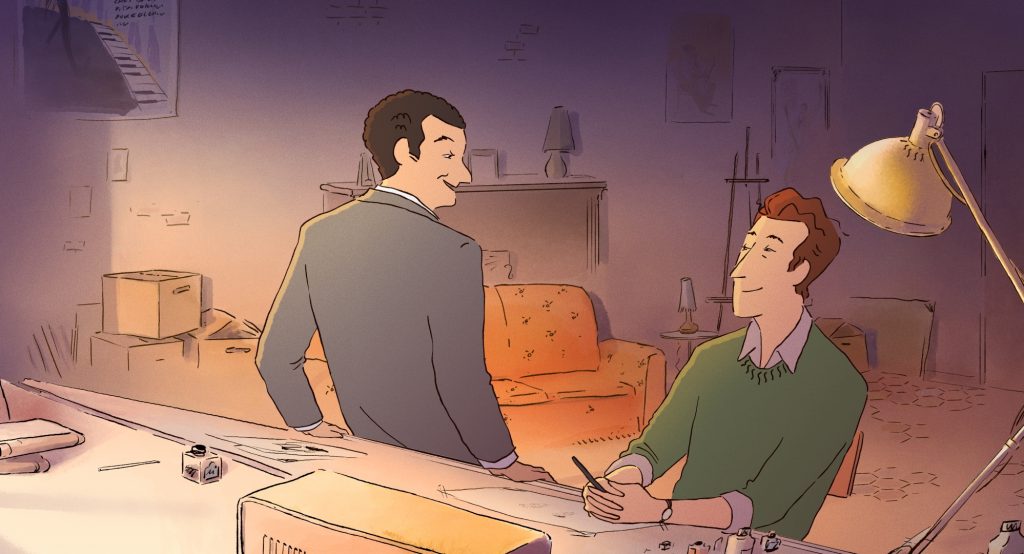
Filmmaker 5.3: Many of our audience appreciate classic films and their influence on today’s filmmakers. Were there films or styles of the past that served as inspiration for this project?
Benjamin: Yes, there are a lot of movie references in our film. From the beginning Amandine and I wanted to do a movie where music would be at the center. We both love Vincent Minnelli’s An American in Paris with Gershwin’s music and all those great hand-drawn sets in which Gene Kelly is dancing. The scene where Jean Jacques dances in the streets of Paris is an homage to that film and also to Jacques Demy’s work notably Les Parapluies de Cherbourg [The Umbrellas of Cherbourg] and Les Demoiselles de Rochefort [The Young Girls of Rochefort]. We also studied a lot of movies of the silent era, especially Buster Keaton, to find the right rhythm for the animation of the long and wide shots we have in the Little Nicholas short stories sequences. And finally François Truffaut’s The 400 Blows was an inspiration throughout the movie but especially for the part where Nicolas and Alceste are cutting school as the young Doinel does with his friend.
Amandine: Yes, films dating from the 50s and 60s inspired us a lot for the atmospheres, the staging, the animation. On the artistic side, the film My Neighbors the Yamadas, directed by Isao Takahata, was a revelation and a perfect example for inspiration.
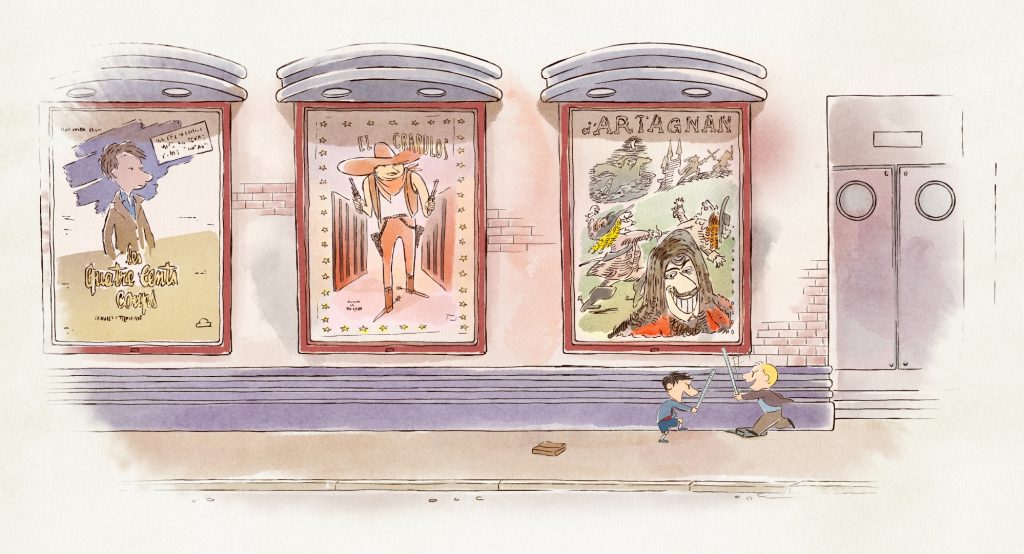

Filmmaker 5.4: What were the greatest opportunities brought forward by working with Anne Goscinny and Jean-Jacques Sempé on this film? Conversely, what was most challenging aspect of telling the personal stories of people you had close access to?
Benjamin: It was really great having Anne and Jean-Jacques on board. First creatively, working closely with Anne on the script and Jean-Jacques on the animation style was huge for us. They both excel in their field and they, of course, were huge assets for the movie. Especially, working closely with Jean Jacques on making his world-famous illustration style move and come to life for the first time was an amazing experience. Sempé is a semi-god in France and it was really touching for us to be able to work with him on what, sadly, ended up to be his last work. Anne also gave us access to her father in a way; we were able to sit at his old desk, touch his typewriter, a lot of stuff that enabled us to understand him better.
Finally, they both did something amazing for us. They shared a lot of the letters Jean-Jacques and René exchanged during the years; it was really moving to be in such close proximity with them. It was a trip down memory lane that was incredible and some of the anecdotes they were telling in those letters ended up in the movie. So, yes, it was challenging but Jean-Jacques and Anne kind of allowed us to tell their story. We won their approval through hard work and sincerity, and we’re really proud of it.
Amandine: For us, it was very important to work with them, to have their opinion and their point of view. Especially since we were animating characters we didn’t know! With Benjamin, we looked at all the interviews, the photos, the archives to immerse ourselves in their life and their universe. It was necessary to be as fair and sincere as possible. Besides, we learned a lot about these two great authors: for example, René Goscinny spent his childhood in Argentina, and Jean Jacques Sempé dreamed of becoming a musician. Luckily for us, he wasn’t very good at the piano, so he started drawing.


Filmmaker 5.5: Little Nicholas is a part of French culture passed down through generations and the work of Jean-Jacques Sempé and René Goscinny well known in France. What do you hope viewers unfamiliar with this legacy take away from experiencing the film?
Benjamin: I think what is so cool with the “Little Nicholas” is that it still resonates with audiences today even if it was written almost 70 years ago. I think it has a lot to do with the genius of Sempé drawings that have become a classic representation of the post war era in France. That France that kind of stuck in the minds of people around the world—with the sound of jazz floating in the streets and artists crowding the cafés of Saint Germain des Près. Mixed with a zest of comedy and poetry coming from a 10-year-old look on life—thanks to Goscinny’s writing—it makes that piece of French culture very universal. I think discovering the Little Nicholas today is even more touching than it was in the 5Os and it might be even cooler abroad than it is in France.
Amandine: The film is for everyone, even those who do not necessarily know these two authors. It’s a beautiful and joyful movie intended for both children and adults, I hope that the public will enjoy living childhood stories of Little Nicholas as well as learning about the authors’ lives. Overall, I hope the audience leaves the session with a smile. We wanted to make a happy, feel good and positive film and share it with everyone.
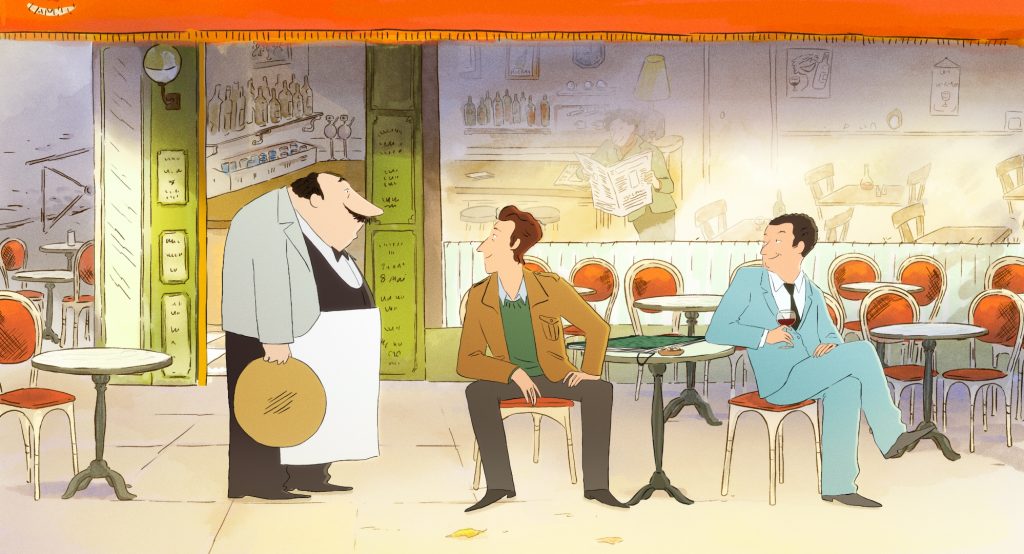
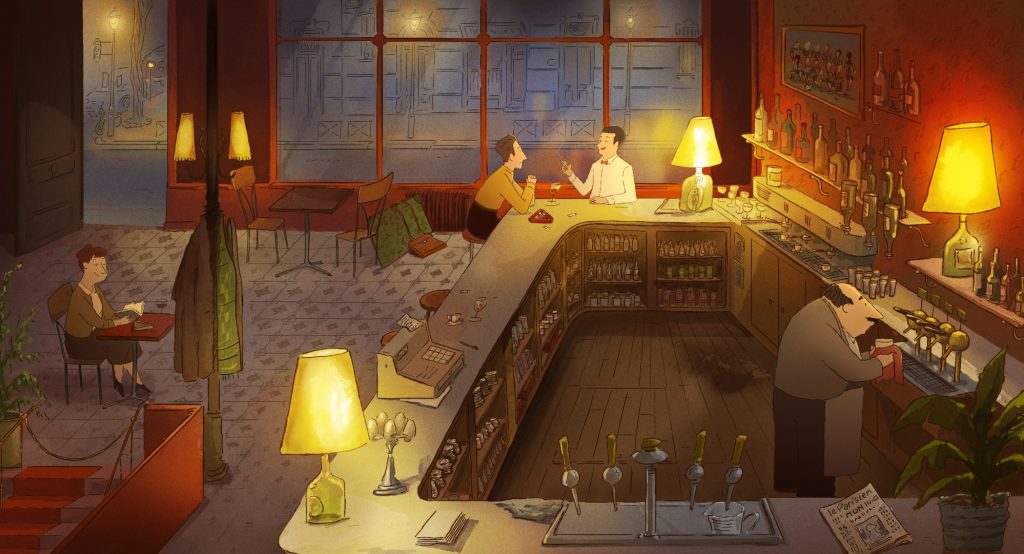
ALL STILLS APPEAR COURTESY OF BUFFALO 8
